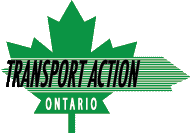
Woodstock station in need of repairs
By Transport Action Ontario | Southwestern Ontario
On August 30, 2022, funding was announced for much-needed repairs to several VIA Rail stations in Southwestern Ontario. Unfortunately, Woodstock was not one of the stations named for repairs, despite being a designated heritage station in in urgent need of attention.
Originally built in 1885 by the Grand Trunk Railway, the station was transferred to VIA Rail ownership in 1986, and extensively renovated in 1992. The station received a “City Beautiful” award in 2000, and up until the cuts of 2012 the station was staffed and well cared for, including repainting in the original green and white scheme of the Grand Trunk, which made it a beautiful and inviting gateway to the city.
Sadly, little work has been done on the exterior of the building since 2012. The condition of the station has deteriorated rapidly over the last few winters, once degraded paint allowed frost and salt to attack the underlying brickwork and timber. What could have been a job for a few buckets of fresh paint is now going to be rather expensive, and this will become exponentially worse the longer the station is left unloved. Tragically, it has also been largely abandoned by the City of Woodstock and the County of Oxford when it should be an attractive portal for commuters and visitors.


While we recognise that, when the federal government does not fully fund VIA Rail’s requests for state of good repair budget appropriations, rolling stock and safety critical items must be prioritized, not fully funding station maintenance is a false economy on the part of the federal treasury that cost taxpayers a lot more in the medium term, while also deterring passengers.
Thankfully, not everything has been neglected. The waiting area inside the station has been recently repainted, together with updates to provide improved washroom accessibility. However, the digital display with train schedule information is positioned so that it can only be seen from outside the station door, and it cannot be read in daylight. The information board outside the station has the printed schedule covered over, possibly a measure taken during the pandemic. Signage inside or outside the station providing information on Woodstock Transit, Middlesex County Connect bus services and T:GO inter-community transit to Tillsonburg is non-existent, even though these routes were consciously designed by municipal leaders in the region to link up with rail.
There is no means of purchasing a ticket either, since the automated kiosks that were installed after the stations were de-staffed in 2012 have all been withdrawn, due to their payment processing systems becoming obsolete.
There is also a local map on display inside the station, which is helpful, because all stations should at least offer visitors some basic local information, but it dates back to 1999 so it is due for an update. The population of the city has grown by 25% since then, but its train service has not.
Meanwhile, the station flowerbeds have also been rebuilt with brick replacing timber, which seems like a lower priority than the masonry of the station itself, but this may have been an affordable project to improve the customer experience at the station that could be squeezed into the crown corporation’s severely constrained budget during the pandemic.
In addition to calling for repairs to this station, Transport Action is campaigning for increased train service frequency across southwestern Ontario, including in the short term the reinstatement of trains 82 and 83 between London and Toronto in the morning and evening, and for the existing afternoon train 76 from Windsor to Toronto call at Woodstock, providing an option for early evening arrival in Toronto.
More information about the history of the station can be found at: https://www.historicplaces.ca/en/rep-reg/place-lieu.aspx?id=4610&pid=0




































You must be logged in to post a comment.